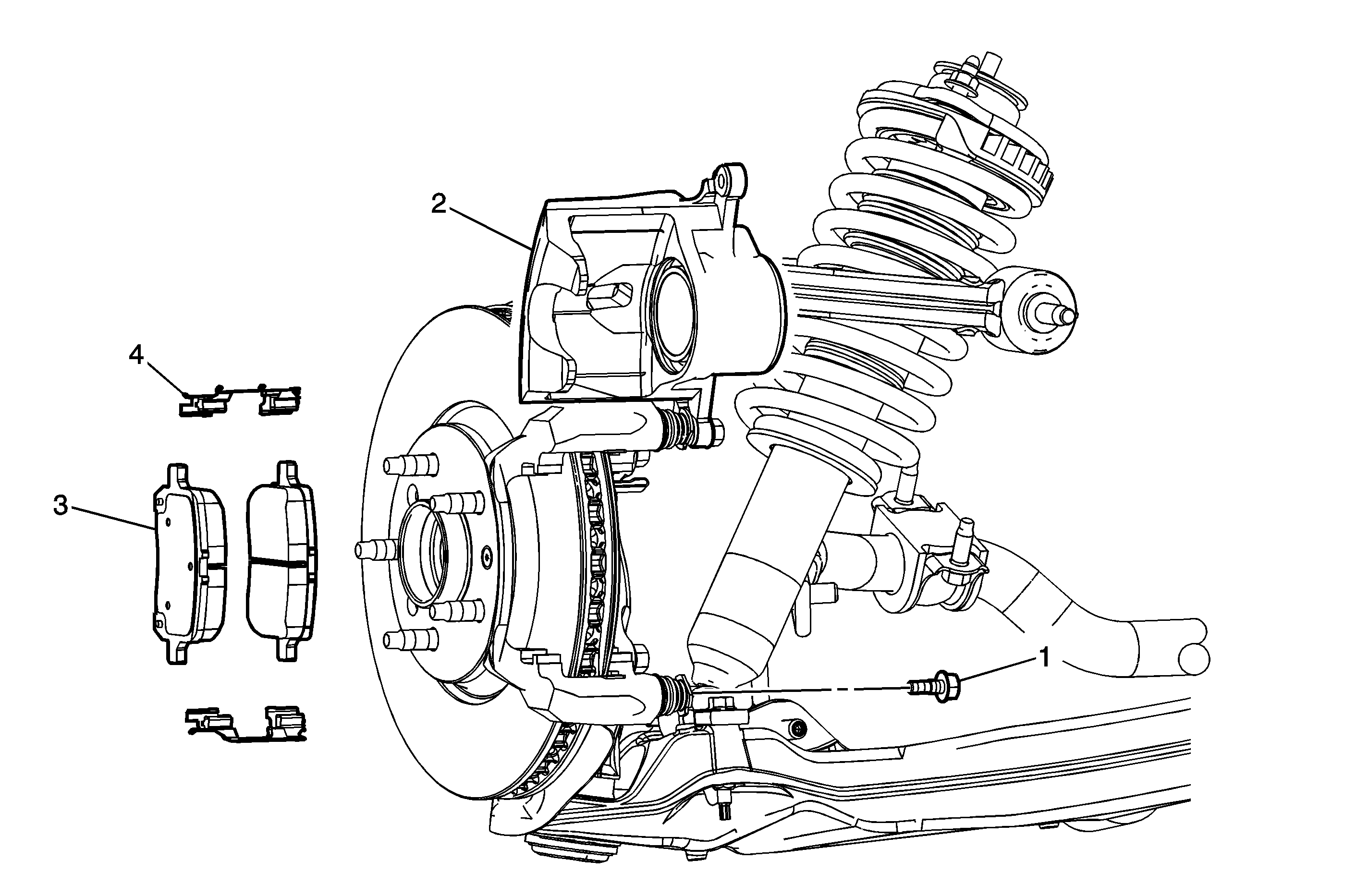Callout
| Component Name
|
|
Caution: Refer to Brake Dust Caution in the Preface section.
Notice: Support the brake caliper with heavy mechanic wire, or equivalent,
whenever it is separated from its mount and the hydraulic flexible brake hose is still connected. Failure to support the caliper in this manner will cause the flexible brake hose to bear the weight of the caliper, which may cause damage to the brake hose and
in turn may cause a brake fluid leak.
Preliminary Procedures
- Inspect the fluid level in the brake master cylinder reservoir.
- If the brake fluid level is midway between the maximum-full point and the minimum allowable level, no brake fluid needs to be removed from the reservoir before proceeding.
- If the brake fluid level is higher than midway between the maximum-full point and the minimum allowable level, remove brake fluid to the midway point before proceeding.
- Raise and support the vehicle. Refer to
Lifting and Jacking the Vehicle
.
- Remove the tire and wheel assemblies. Refer to
Tire and Wheel Removal and Installation
.
|
1
| Brake Caliper Guide Pin Bolt
Notice: Refer to Fastener Notice in the Preface section.
Tip
Only remove the lower brake caliper guide pin bolt.
Tighten
34 N·m (25 lb ft) |
2
| Brake Caliper Assembly
Tip
| • | Without disconnecting the brake hose, pivot the brake caliper upward and support with heavy mechanics wire or equivalent. |
| • | Place a block of wood or an old disc brake pad against the brake caliper piston. |
| • | Using a large C-clamp, slowly and evenly compress the brake caliper piston squarely into the caliper bore. |
|
3
| Brake Pad (Qty: 2)
|
4
| Brake Pad Spring
Procedure
- Thoroughly clean the brake pad hardware mating surfaces of the caliper bracket of any debris and corrosion.
- Inspect the brake caliper guide pins for freedom of movement and inspect the condition of the guide pin boots. Move the guide pins inboard and outboard within the bracket bores without disengaging the slides from the boots and observe for the following:
| • | Restricted caliper guide pin movement |
| • | Looseness in the brake caliper mounting bracket |
| • | Seized or binding caliper guide pins |
- If any of the conditions are found, the brake caliper guide pins and/or boots require replacement.
- Apply a very thin coating of high temperature silicone brake lubricant to the pad hardware mating surfaces of the caliper bracket only.
- If replacing the brake pads, DO NOT reuse the brake pad springs. Install NEW brake pad springs.
- After the installation is complete, with the engine OFF, gradually apply the brake pedal to approximately 2/3 of its travel distance.
- Slowly release the brake pedal.
- Wait 15 seconds, then repeat steps 6-7 until a firm brake pedal is obtained. This will properly seat the brake caliper piston and brake pads.
- Fill the master cylinder reservoir to the proper level. Refer to
Master Cylinder Reservoir Filling
.
- Burnish the brake pads and rotors. Refer to
Brake Pad and Rotor Burnishing
.
|

